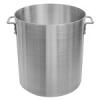Hi all!
We are a Canadian based company and are being audited to SQF level 2 standards.
I'm wondering for ingredient labelling, do I have to name the form that the ingredient is in? For example, can I just list "Thyme" or do I have to list "Dried thyme"? Another example we've run into, we use freeze-dried blueberries as an ingredient, should we be listing "Freeze-dried blueberries" or just "Blueberries" as an ingredient?
Thank you for the help,
-Kyra












